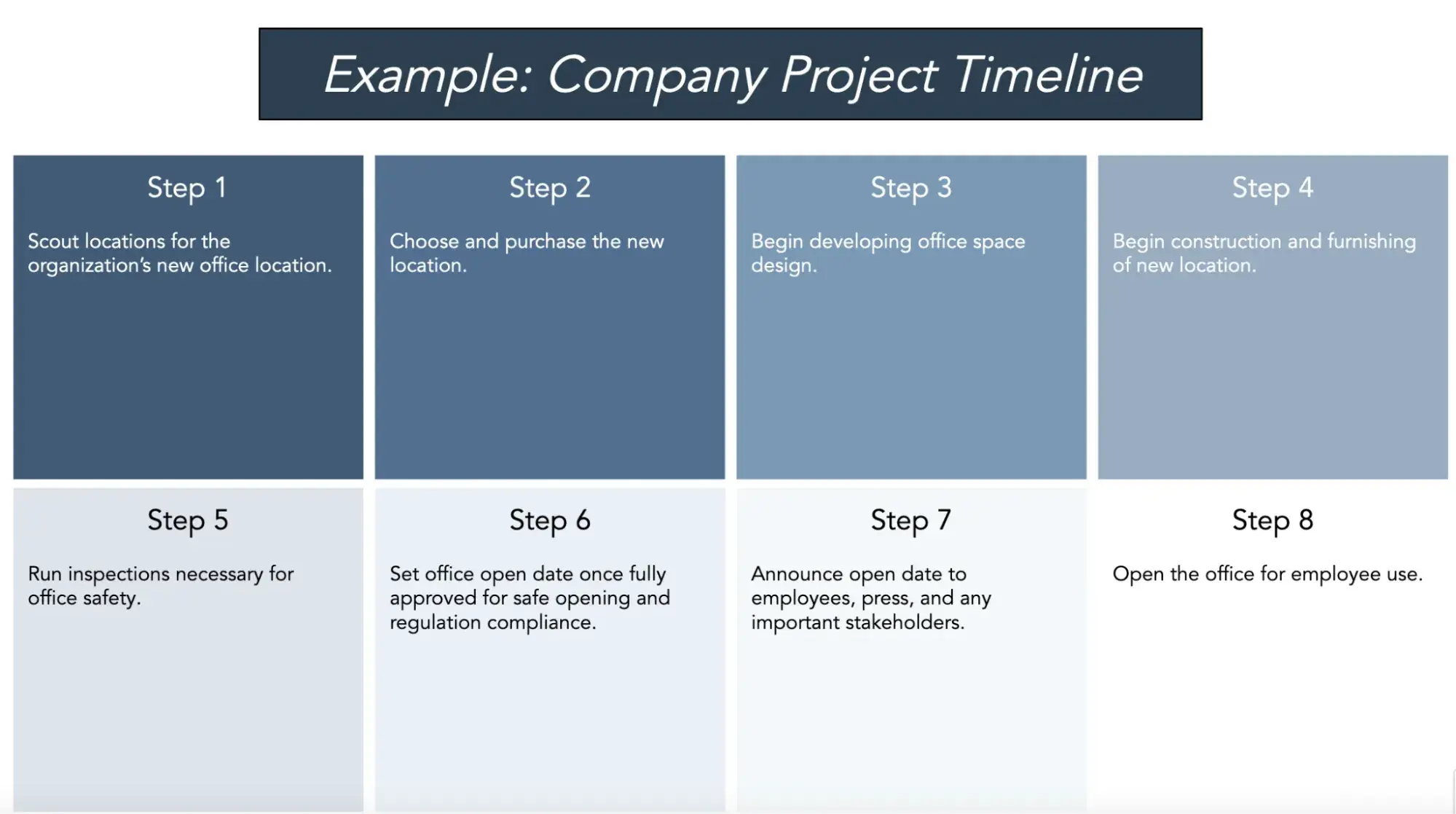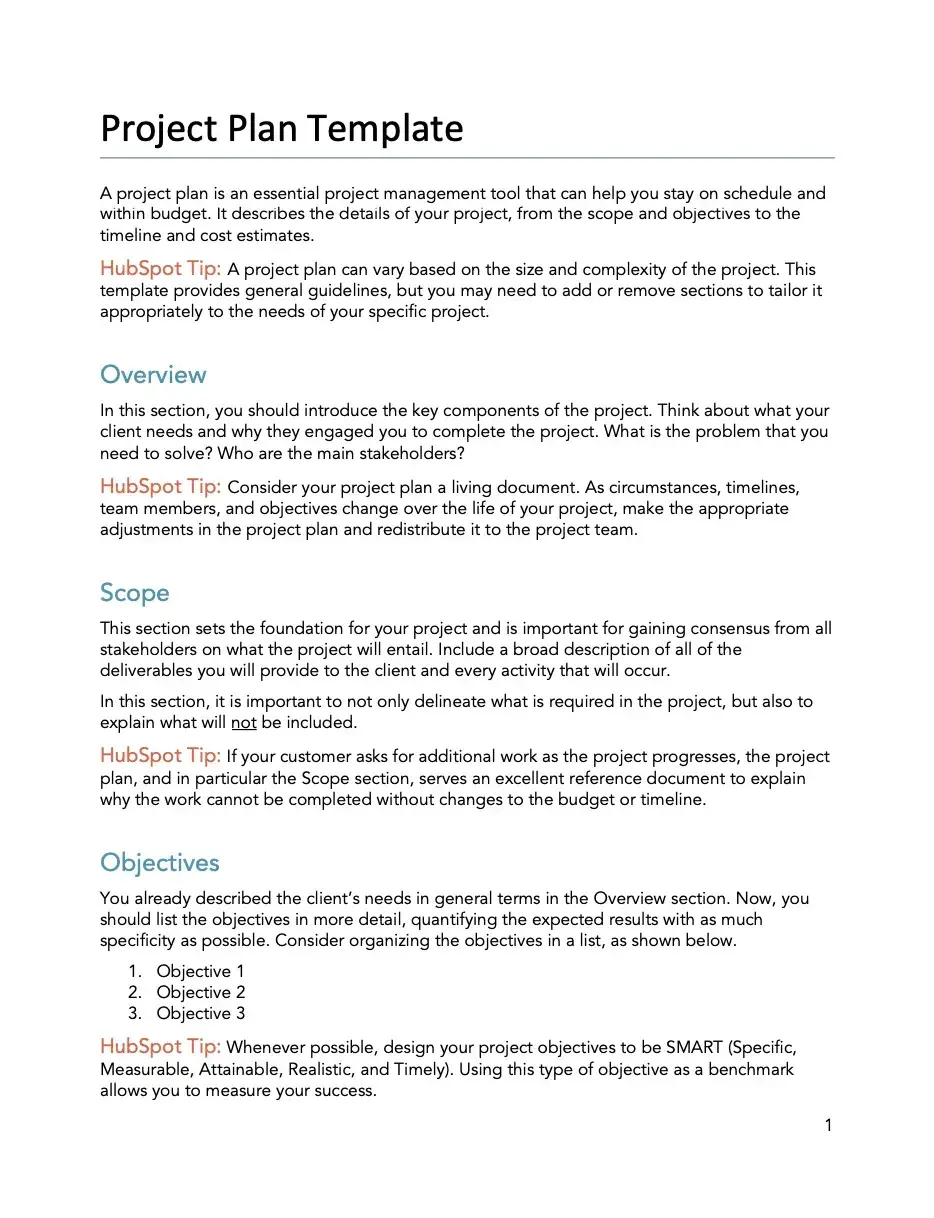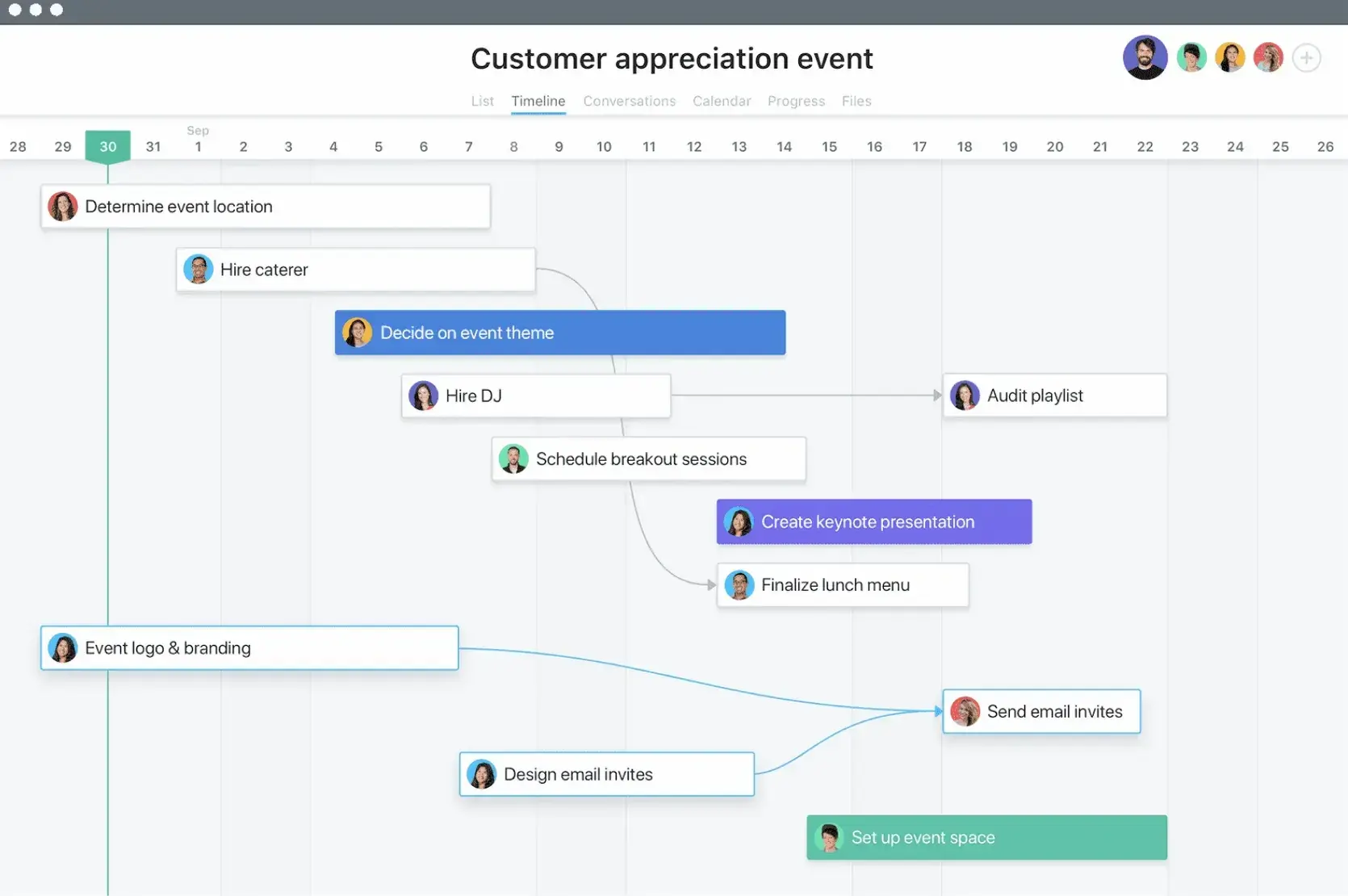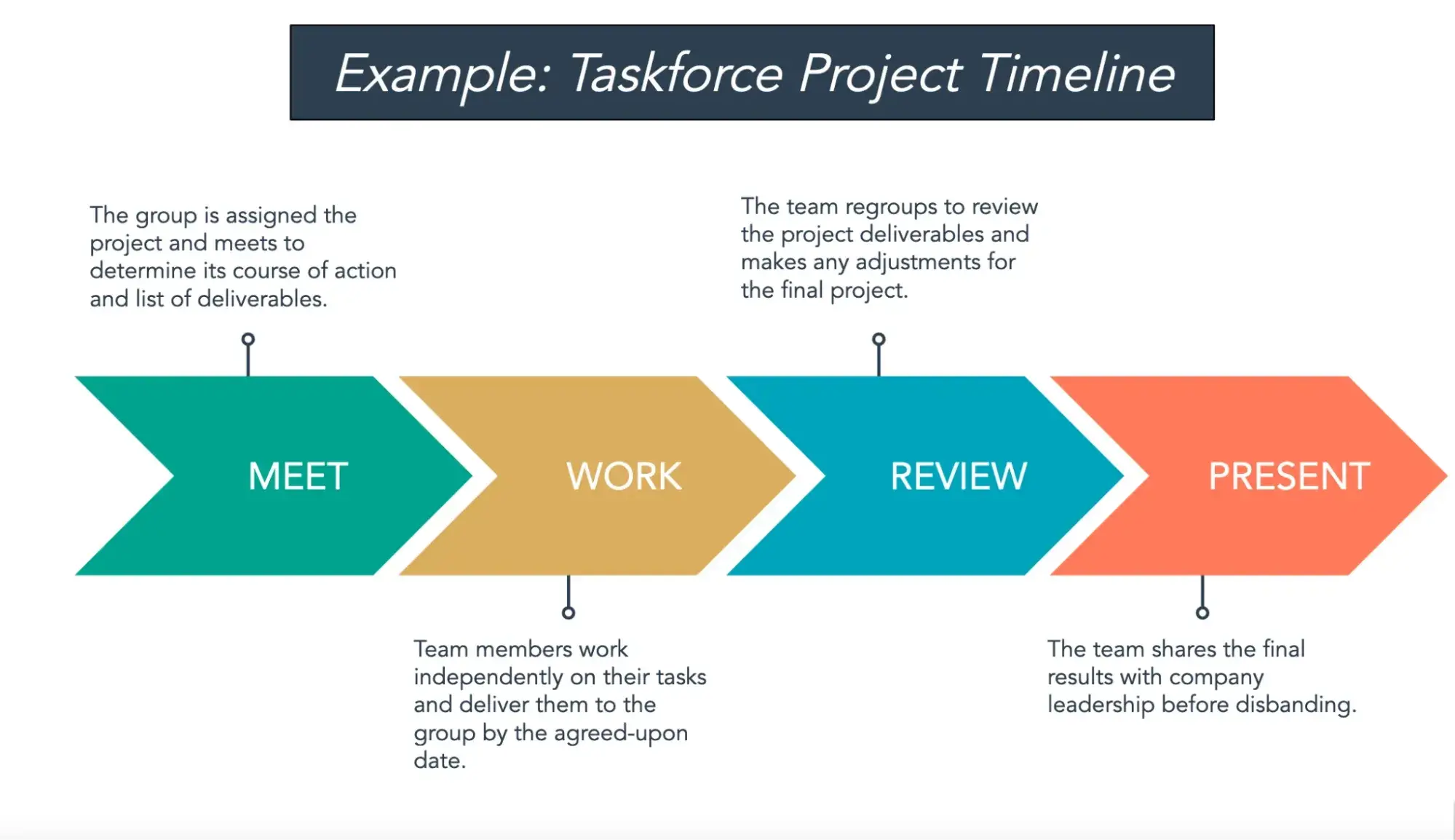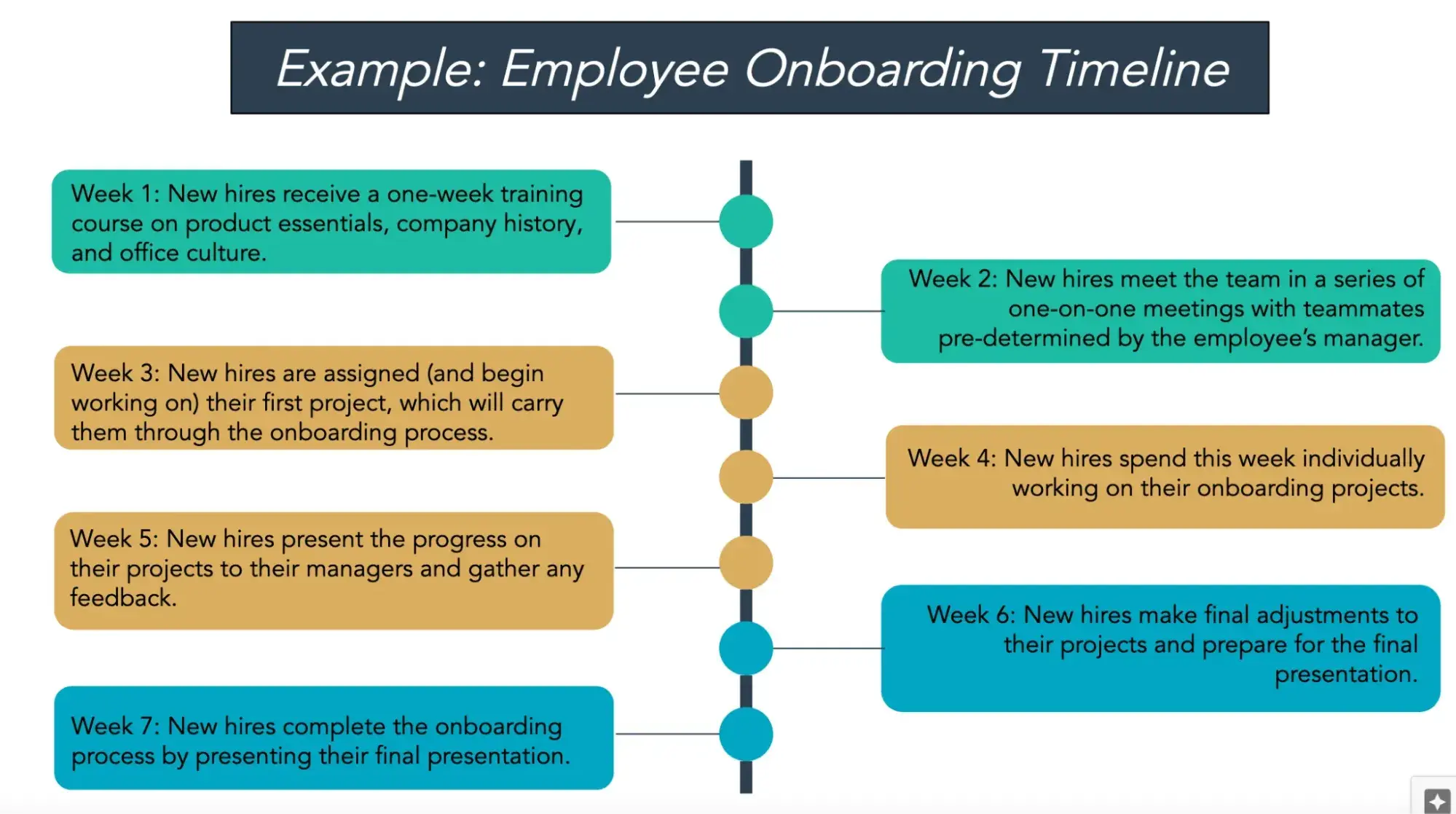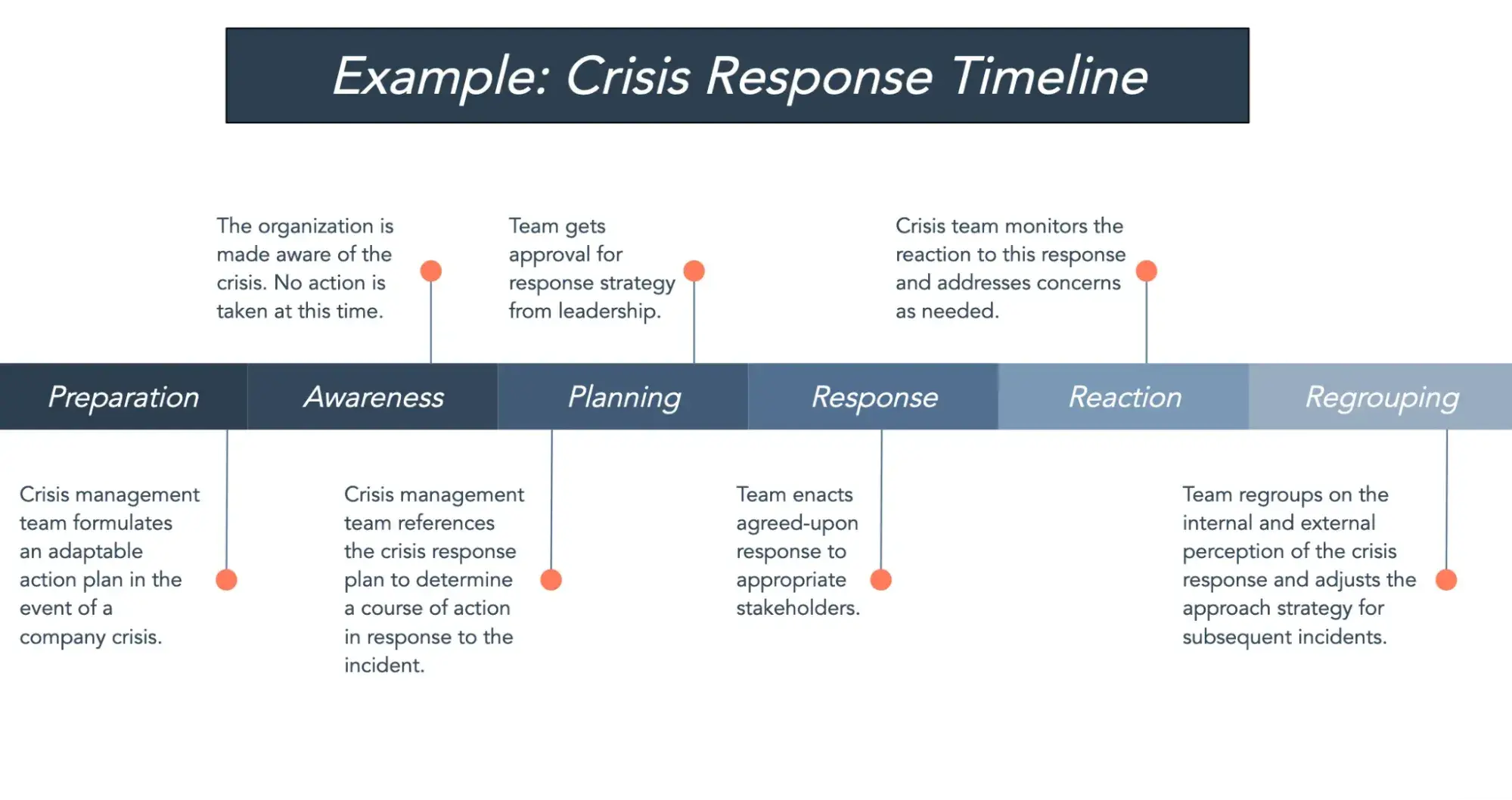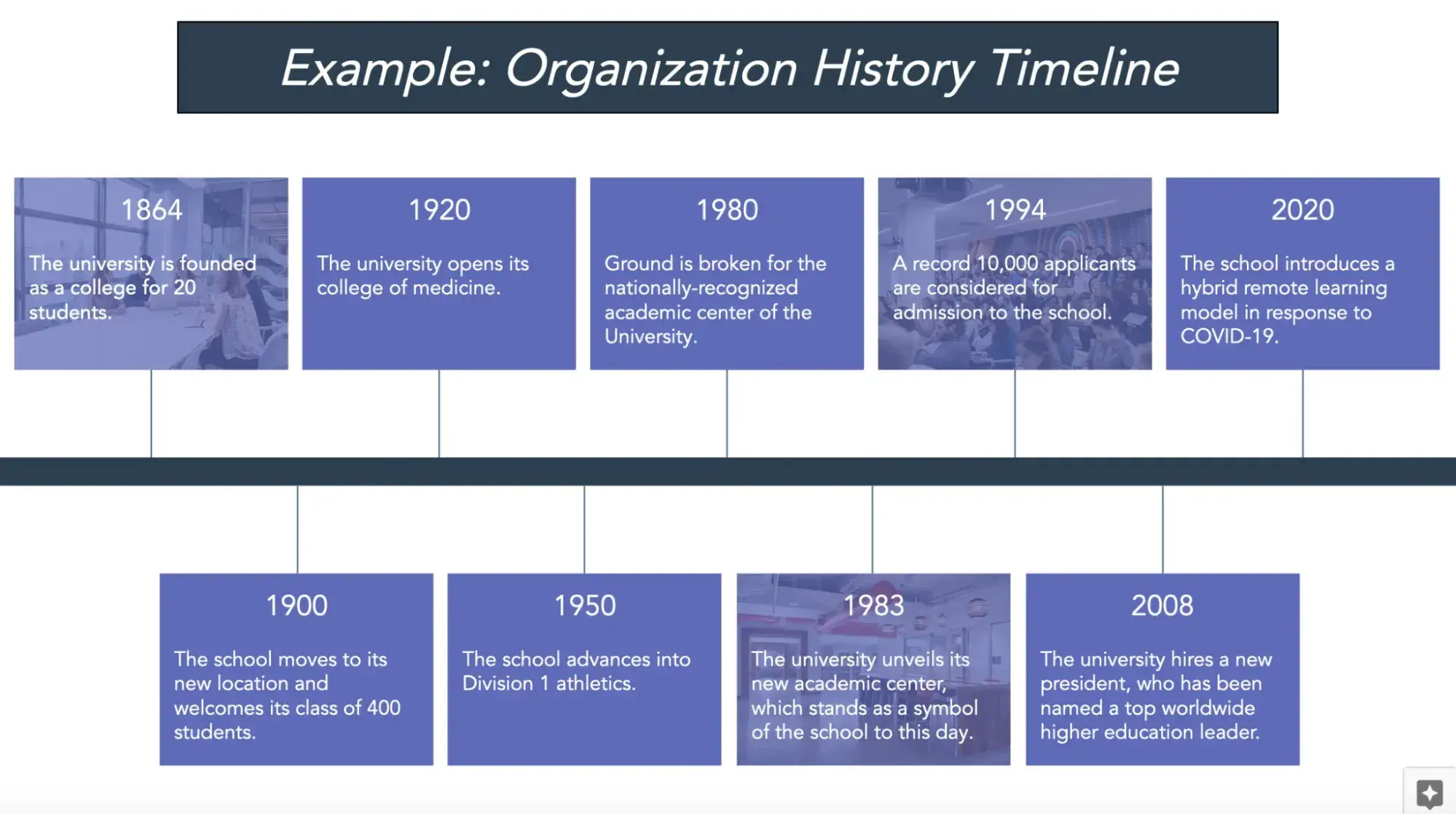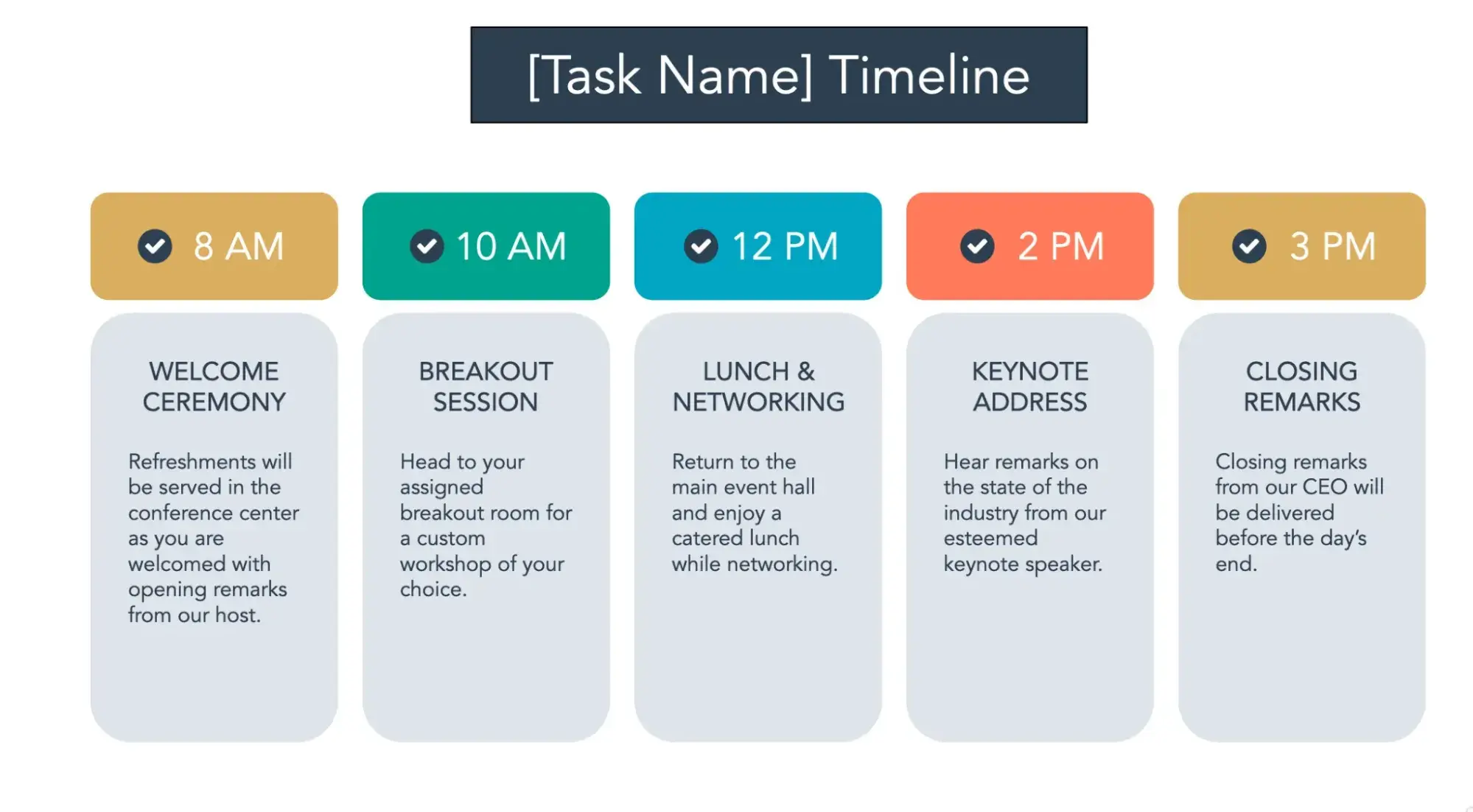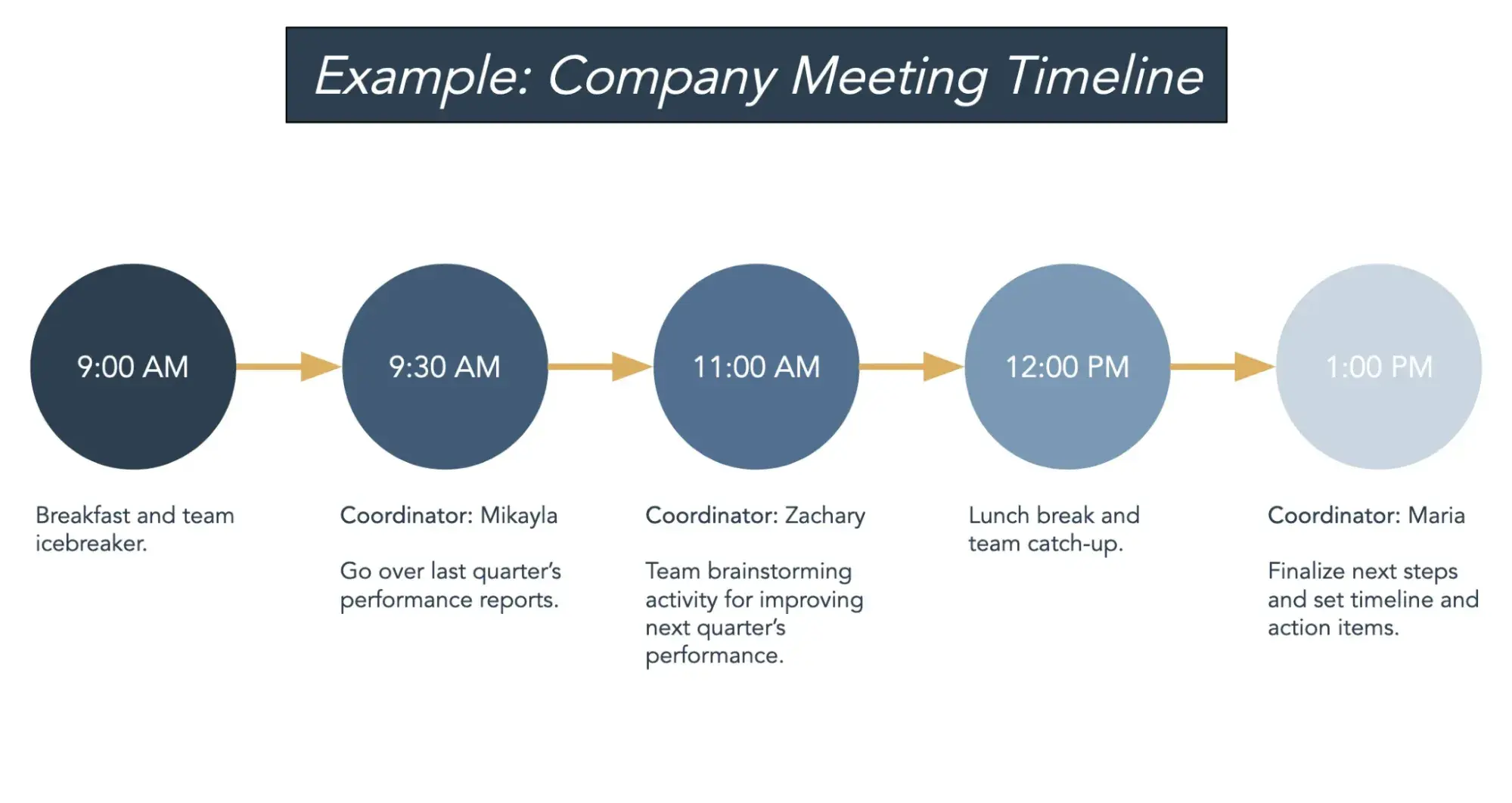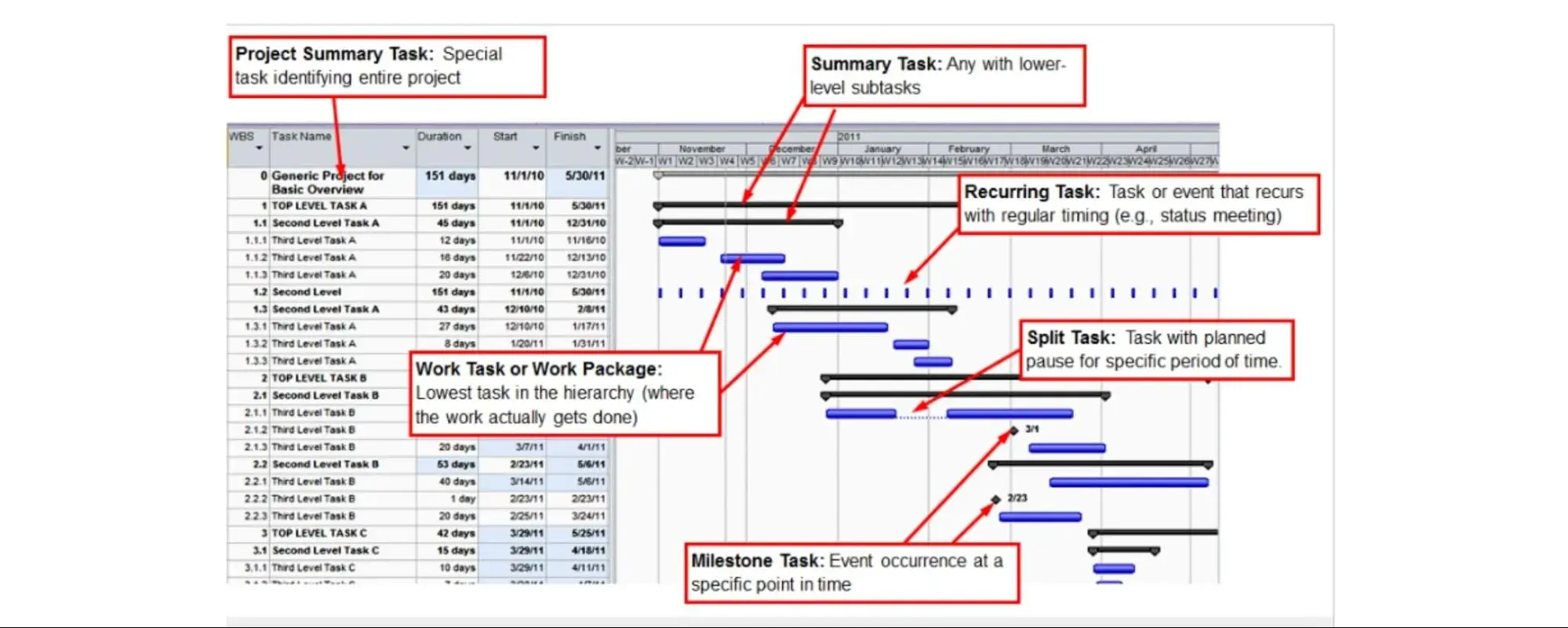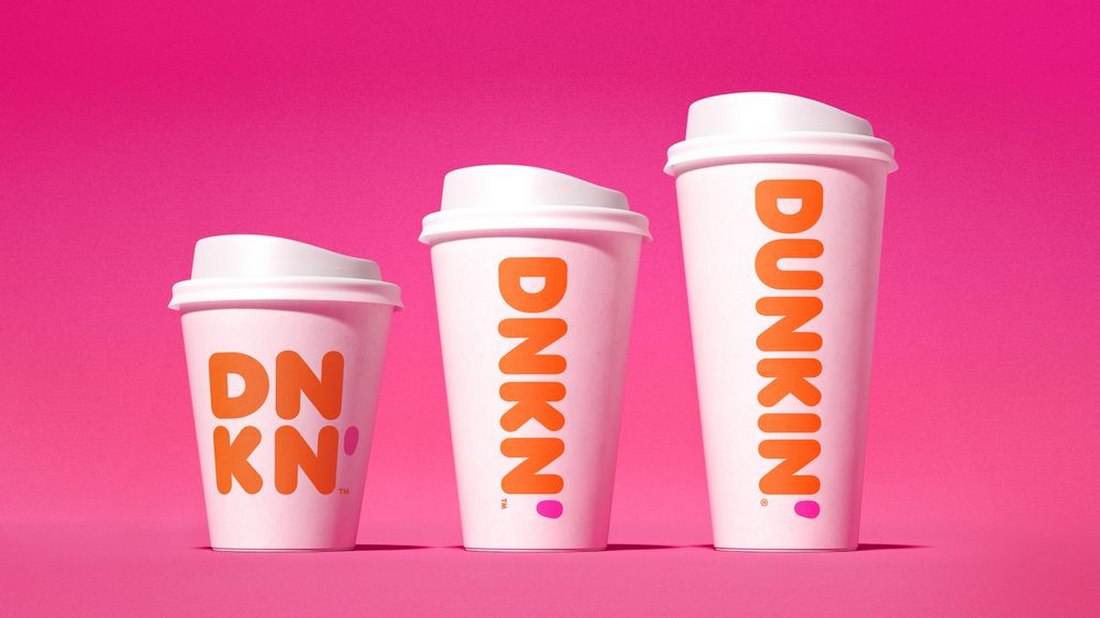When you already have a well-established business and need a business plan, it’s usually not difficult because you know everything inside out.

But when you’re a startup and need to create your first detailed business plan, it’s a challenge. A serious challenge. Been there — done that.
My first business plan was, to put it mildly, a disaster. It had so many unnecessary details and lacked essentials that it was practically a novel.
So, I sought professional help with writing the business plan and learned everything I’m going to share with you today.
Let’s learn how to craft an organized and well-thought-out business idea that answers potential investors’ questions.
Table of Contents
Business Plan Template
To make this post practical from the get-go, I’ll walk you through the process of filling out your business plan template, like this free, editable version:

Download a free, editable one-page business plan template.
I know that when looking at a blank page on a laptop screen, the idea of writing your business plan can seem impossible. However, it's a mandatory step to take if you want to turn your business dreams into a reality.
That's why I’ve crafted the above business plan template for you to download and build upon. It contains prompts for all of the essential parts of a business plan, all of which I will elaborate on below.
Business Plan Layout
While business plans can take all sorts of different formats and have different styles, most business plans should stick to the following layout:
- Cover page — the introduction to your business plan with all your company and personal data.
- Executive summary -— a brief bird’s eye view of your business plan.
- Company overview and business description — details about the company organization and the purpose of your business.
- Product and services line — what you’ll be selling.
- Market analysis — who you’ll be selling to and what unique value you offer.
- Marketing plan — how you will market your business and products/services.
- Sales Plan — how you will sell to your target audience.
- Legal notes — legal organization and requirements for your business.
- Financial considerations — your projected costs and revenue.
- Appendix — supporting evidence for your business plan.
I’ll get into the details of these parts below, but first, let’s understand the big picture of why a business plan is important.
Building a Successful Business Plan
Before I get to the components of a business plan, such as an executive summary and company description, let's talk about key elements that should serve as building blocks for your plan.
For a startup owner, the thought of writing a business plan sounds like a chore — a necessary means to an end. But that's a bad take.
A solid business plan is a blueprint for success. It's key to securing financing, presenting your business, outlining your financial projections, and turning that nugget of a business idea into a reality.
At the core, your business plan should answer two questions: why your business and why now?
Investors want to know why your business is entering the market, i.e., what problem it‘s solving and how it’s different from what's currently out there. They also want to know why now is the right time for your type of product or service.
At a minimum, your plan should:
Be more realistic than idealistic.
Too often, business plans overly focus on how things could be instead of how they are. While having a vision is important, your plan needs to be rooted in research and data.
If you’re a freelancer thinking you don’t need something as serious as a business plan, take this tip from Joseph:

There’s no doubt — you need a business plan, but at the beginning, you may not have numbers or brilliant results to point to. What can you do to make your plan sound good while still being realistic?
Start by grounding your plan in real-world data. Even if you don’t have your own results yet, you can use industry benchmarks and market research to provide a solid foundation.
Show that you understand the landscape by incorporating insights from existing reports or similar businesses.
I suggest including even the smallest projects you worked on as a freelancer. Everything counts.
Be transparent about the assumptions you're making. Explain the basis for your projections and how you arrived at your estimates.
I’ve found this honesty will help others see that your plan is well thought-out, even if it’s still in the early stages.
Legitimize your business idea.
If an idea fails on paper, it's a signal to go back to the drawing board. In doing so, you avoid losing precious time or money chasing an unrealistic idea.
“When you are officially in business, you are likely to take your commercial endeavors more seriously, and you will start to make more strategic decisions,” shares Nikki Rogers, CEO of the Bladen Group.
“As the owner of a legitimate business, you are more likely to network with other business owners, improve your skills, increase your business knowledge, and generally level up to make your business successful.”
Rogers also points out an important consideration: What if you can no longer work in your business?
After all your hard work, you want your business to be a valuable asset that you can sell, transfer, or leverage. To achieve this, your business must be legitimate and properly structured.
If it’s not, all your efforts could disappear. So, make sure your biz is legally established and well-organized so it remains a valuable asset, even if you need to step away.
Position your business for funding.
To get your business off the ground, chances are you‘ll need financial backing.
Even with a solid business idea, investors, lenders, and banks still need convincing.
An effective business plan will outline how much money you need, where it’s going, what targets you will hit, and how you plan to repay any debts.
This is especially important when you're a startup, and no one has heard of you, making persuasion three times harder.
I recently read a great piece by FasterCapital on this topic, but what especially caught my attention was the advice about giving up some control when you take on investors.
Investors will want a say in how the business is run, which means you’ll have to make compromises and listen to their input. This can be challenging for startup owners, especially when you're worried about potential losses.

Image Source
Together with the founder of Signum AI, we shared the same mindset at the beginning and could not imagine losing a single penny. But now I know that “no risk, no fun” applies to business as well.
Lay the foundation.
Investors focus on risk — if anything looks shaky, it could be a dealbreaker. Ideally, your business plan will lay down the foundation for how you'll operate your business — from operational needs to financial projections and goals.
Regarding financial projections, it was the hardest thing for me in the beginning until I learned how to measure specific parts and use the right formulas for each segment. Here, I will share the formulas and key metrics you need to track so you can include all the necessary details in your business plan:
Revenue Growth
- Formula: (Revenue This Period - Revenue Last Period) / Revenue Last Period x 100%
- Example: If revenue grew from $10,000 to $12,000: (12,000 - 10,000) / 10,000 x 100% = 20%
Customer Acquisition Cost (CAC)
- Formula: Total Marketing and Sales Expenses / Number of New Customers Acquired
- Example: If you spent $5,000 to acquire 50 customers: 5,000 / 50 = $100
Customer Retention Rate
- Formula: (Customers at End of Period - New Customers) / Customers at Start of Period x 100%
- Example: If you start with 100 customers, acquire 20 new ones, and end with 110: (110 - 20) / 100 x 100% = 90%
Net Cash Flow
- Formula: Cash Inflows - Cash Outflows
- Example: If you have $15,000 in cash inflows and $12,000 in outflows: 15,000 - 12,000 = $3,000
Burn Rate
- Monthly Operating Expenses
- Example: If you spend $10,000 a month, your burn rate is $10,000.
Net Promoter Score (NPS)
- Formula: % Promoters - % Detractors
- Example: If 70% are promoters and 10% are detractors: 70% - 10% = 60 NPS
You should also calculate the average deal sum, the sales cycle, the “demo-won deal” ratio, the quality of leads, the most popular pricing tier, etc.
Even for my freelance writing, I know these figures — not to mention me taking care of fundraising for a charitable organization. Data speaks. You have to remember it.
Communicate your needs.
It‘s nearly impossible to communicate your needs if you don’t know what they are first.
Of course, business needs change, and it's hard to predict everything at the start, but your plan should still give a clear idea of how your business will run both now and in the future — and what the potential risks are.
To get the gist of it, consider three things:
- Your industry – How does your product or service fit within your industry? Are you targeting a specific niche? Where do you see the industry going in the next three to five to ten years?
- Your target audience – Who are you targeting? What challenges are they facing? How will your product or service help them in their daily lives?
- Your unique selling proposition (USP) – What sets you apart from your competitors? Is it your product/service features? Your company values? Price?
The FasterCapital article offers this piece of advice, “Your value proposition should be focused on the customer and not on the features of your product or service. Instead of saying, ‘Our product has X features,’ say, ‘Our product helps Y people.’”
Once you know the answers to these questions, you'll be equipped to answer the question: Why is your business and why now?
Now for the fun part: detailing all the parts of a business plan layout!

Download the template for free.
1. Cover Page
Your business plan should be prefaced with an eye-catching cover page. This means including a high-resolution image of your company logo, followed by your company's name, address, and phone number.
Since this business plan will likely change hands and be seen by multiple investors, you should also provide your own name, role in the business, and email address on the cover page.
At the bottom of this page, you can also add a confidentiality statement to protect against the disclosure of your business details.
The statement can read as follows: "This document contains confidential and proprietary information created by [your company name]. When receiving this document, you agree to keep its content confidential and may only reproduce and/or share it with the express written permission of [your company name]."
Keep your cover page simple and concise — and save the important details for other sections.
Why it matters: First impressions are everything, and a clean cover page is the first step in the right direction.
Examples of a Cover Page
There is no single ideal cover page that every business should follow.
For instance, if you're in real estate, you might want a catchy design showcasing luxury villas, jacuzzis, palm trees, and so on — you get my point.
On the other side, if you're in finance, you might prefer a more corporate style like this:

Image Source
And then, if you‘re in the fashion industry, you definitely can’t go with something so “boring,” if I may say.
You need to opt for something more eye-catching, stylish, and aesthetic, like this:

Image Source
People are visual creatures, and what catches our attention first often leaves the most lasting impression. That’s why your cover page must be really good to make them want to continue to the next page.
2. Executive Summary
The executive summary of your business plan provides a one- to two-page overview of your business and highlights the most crucial pieces of your plan, such as your short-term and long-term goals.
The executive summary is a boiled-down version of your entire business plan, so remember to keep this section to the point and filled only with essential information.
Typically, this brief section includes:
- A mission statement.
- The company's history and leadership model.
- An overview of competitive advantage(s).
- Financial projections.
- Company goals.
- An ask from potential investors.
When I was working on my summary, I found Felix Haller’s video super helpful. He breaks it down — like how your summary should be concise, with an intro and no more than five main bullet points.
What stood out to me was his advice on focusing on the key insights, the “so what's,” instead of just throwing in a bunch of facts.
As someone who thinks visuals are super important, I loved how Haller showed that executive summaries don’t have to be dull bullet points — they can actually look great and be engaging.

Image Source
He also mentioned that if you only had 30 seconds to get your point across, your summary should cover everything important. This tip stuck in my mind and made my presentations clearer and more effective.
Why it matters: The executive summary is known as the make-or-break section of a business plan. It influences whether investors turn the page or not — so effectively summarizing your business and the problem it hopes to solve is a must.
Think of the summary as a written elevator pitch (with more detail). While your business plan provides the nitty-gritty details, your summary describes — in a compelling but matter-of-fact language — the highlights of your plan. If it's too vague, complicated, or fuzzy, you may need to scrap it and start again.
Example of an Executive Summary Introduction
“The future looks bright for North Side Chicago, particularly the Rock Hill Neighborhood. A number of high-end commercial and residential developments are well on their way, along with two new condo developments in nearby neighborhoods.
“While the completion of these developments will increase the population within the neighborhood and stimulate the economy, the area lacks an upscale restaurant where residents and visitors can enjoy fine food and drink. Jay Street Lounge and Restaurant will provide such a place.”
3. Company Overview & Business Description
In this section, provide a more thorough description of what your company is and why it exists.
The bulk of the writing in this section should be about your company's purpose — covering what the business will be selling, identifying the target market, and laying out a path to success.
In this portion of your business plan, you can also elaborate on your company's:
- Mission statement.
- Core values.
- Team and organizational structure.
I like to imagine it as a motivational letter you might write when applying for a job. A company overview serves a similar purpose to your business plan. Here’s a good example of a company overview for SMBs:

Image Source
The description explains what makes the company special, who it‘s for, and why it stands out from the competition. It gives a clear snapshot of the team’s skills, financial health, and the products they offer.
Highlighting partnerships with major curriculum publishers and a focus on fitting with existing curricula boosts its standing in the education market. Overall, I think the description is well put together and convincing.
Why it matters: Investors look for great structures and teams in addition to great ideas. This section gives an overview of your business‘s ethos. It’s the perfect opportunity to set your business apart from the competition — such as your team's expertise, your unique work culture, and your competitive advantage.
Example of a Values/Mission Statement
“Jay Street Lounge and Restaurant will be the go-to place for people to get a drink or bite in an elegant, upscale atmosphere. The mission is to be North Side's leading restaurant, with the best tasting food and the highest quality service.”
4. Product & Services Line
Here‘s where you’ll cover the makeup of your business‘s product and/or services line. You should provide each product or service’s name, its purpose, and a description of how it works (if appropriate). If you own any patents, copyrights, or trademarks, it's essential to include this info too.
Next, add some color to your sales strategy by outlining your pricing model and mark-up amounts.
If you're selling tangible products, you should also explain production, costs, and how you expect these factors to change as you scale.

Image Source
I’ve recently watched a great YouTube tutorial by Troyia Monay, where she points out that it’s a good idea to outline how your products or services are priced compared to your competitors.
She also mentions something that I find super important: many people think they don’t need this section if they’re not in ecommerce, but that’s the wrong mindset.
Even if you aren’t in ecommerce, the products or services you offer are the backbone of your business, and you need to explain them in the right way.
For instance, when I describe my services, I do it like this:
- I tell clients about my core services: Creating B2B blog posts and top-notch SaaS content.
- I explain what each service covers: Keyword and topic research, writing detailed articles, creating article outlines, and tracking article performance.
- I outline my pricing options clearly: Project-based quotes for one-time tasks and retainer packages for ongoing content needs.
- As the cherry on the top, I always share why they should choose me: A personalized approach, thorough research, strong SEO skills, timely delivery, industry connections, and a commitment to quality.
Why it matters: This section contains the real meat of your business plan. It sets the stage for the problem you hope to solve, your solution, and how your solution fits in the market.
Example of a Product/Service Offering
“The menu at Jay Street Lounge and Restaurant will focus on Moroccan cuisine. The stars of the menu (our specialties) are Moroccan dishes, such as eggplant zaalouk, seafood bastilla, tagine, and chickpea stew.
For those who enjoy American dishes, there will also be a variety of options, from burger sliders and flatbread pizza to grilled steak and salads.
“The food at Jay Street will have premium pricing to match its upscale atmosphere. During the summer months, the restaurant will have extra seating on the patio where clients can enjoy a special summer menu. We will be open on all days of the week.”
There's no one-size-fits-all formula for this section.
For instance, one plan may delve into its ability to market in a more cost-effective way than the competition, whereas another plan focuses on its key products and their unique features and benefits.
Regardless of your angle, it's critical to convey how your offerings will differ from the competition.
Something that works for me:
“Collaboration with me means you'll never see the bland, robotic content that’s just filler for search engines. I write for readers first and foremost. I want to make them (not only Google) happy and satisfied and help them find the information they came for.
By using real-world examples, interviewing experts for my pieces, and addressing what people actually want, my content quickly climbs to that coveted #1 spot in search results.”
5. Market Analysis
The market analysis section is where you‘ll provide details about the audience to which you’re marketing your business.
This should encompass the size of your total addressable market, your market‘s demographics and psychographics, and location analysis for your business’ operating space.
It helps to reference your market research documentation in this section, like a Porter's Five Forces Analysis or a SWOT Analysis (templates for those are available here). You can also include them in your appendix.
In my opinion, SWOT analysis gives the clearest snapshot of a business's potential and challenges. It’s been my go-to tool since day one. Check out how straightforward and powerful it can be with this Apple example:

Image Source
And here’s what a potential SWOT analysis for a startup might look like:
- Strengths: Innovative technology, a talented and dedicated team, or a unique value proposition in terms of customer care or a wide range of goods, etc.
- Weaknesses: Limited brand recognition, restricted budget, or gaps in industry experience.
- Opportunities: Emerging market trends, new technological advancements, or changes in regulations that favor your business.
- Threats: Increasing competition, economic instability, or evolving market demands that could impact your business. Plus, unstable lead generation, product bugs, and more.
If your company already has buyer personas, you should include them here as well. If not, you can create them right now using the Make My Persona Tool.
Why it matters: Having an awesome product is, well, awesome — but it isn't enough. Just as important, there must be a market for it.
I like how this section allows you to dig deeper into your market, which segments you want to target, and why. The “why” here is essential since targeting the right segment is critical for the success and growth of your business.
It's easy to get lost (or overwhelmed) in a sea of endless data. For your business plan, narrow your focus by answering the following questions:
- What is my market? In other words, who are my customers?
- What segments of the market do I want to target?
- What's the size of my target market?
- Is my market likely to grow?
- How can I increase my market share over time?
As Mike Ploger from Visme says, “Writing a market analysis is like looking into the engine of a car and understanding why every little component gets that vehicle from point A to point B. You may be at Point A right now, but soon, you‘ll be sitting pretty much riding off into this concept.
You’ll want to study and note occurrences in your industry that have made impacts on its overall direction. Analyzing external factors, like political, economic, sociological, technological, legal, and environmental aspects, will help you prepare for potential disruptions.”
The whole tutorial where Mike breaks down crafting a market analysis is pure gold. It’s packed with visual examples and clear explanations, so I definitely recommend checking it out:
Example of a Market Analysis
“Jay Street Lounge and Restaurant will target locals who live and work within the Rock Hill Neighborhood and the greater North Side Chicago area. We will also target the tourists who flock to the many tourist attractions and colleges on the North Side.
“We will specifically focus on young to middle-aged adults with an income of $40,000 to $80,000 who are looking for an upscale experience. The general demographics of our target market are women between 20 to 50 years old.
“A unique and varied Moroccan-American menu, along with our unique upscale atmosphere, differentiates us from competitors in the area. Jay Street will also set itself apart through its commitment to high-quality food, service, design, and atmosphere.”
6. Marketing Plan
Unlike the market analysis section, your marketing plan section should explain the tactical approach to reaching your aforementioned target audience.
List your advertising channels, organic marketing methods, messaging, budget, and any relevant promotional tactics.
If your company has a fully fleshed-out marketing plan, you can attach it to the appendix of your business plan. If not, download this free marketing plan template to outline your strategy.
When it comes to marketing strategy, there’s no universal playbook that works for everyone. What works wonders for one might not cut it for another.
This is something that highly depends on the business niche. I’ve seen new businesses, like handmade toys or lollipops, blow up on TikTok and become profitable in just three months.
Will the same happen to your handmade store? Well, no one can guarantee, but with a solid strategy and by learning from similar successful businesses in your niche, you’ve got a better shot at making it work.
From my experience as a freelance writer, LinkedIn worked out the best. It's safe to say that 93% of my clients came organically via LinkedIn; the rest is attributed to email outreach.
And when it comes to strategy, I can’t help but share one of the best tutorials I’ve ever seen on this topic by Adam Erhart, who crafts a marketing strategy using Kodiak Cakes as a case study.
Here's a breakdown of the highlights:
Unbiased Strategy Development: Despite having no prior knowledge about Kodiak Cakes beyond their taste, Erhart used the opportunity to develop a marketing strategy from scratch. He approached it as if he were the CEO or CMO of the brand, aiming to increase its reach and effectiveness.
Five-Step Marketing Process: Erhart outlined his approach, which involves a structured five-part process:
- Business Model: Understanding what Kodiak Cakes sells, its price points, and its distribution channels (retail and direct-to-consumer).
- Market Analysis: Identifying the target market, which he speculated might be millennials or young families, particularly focusing on health-conscious individuals.
- Messaging: Crafting the right message to resonate with the target audience, highlighting elements like protein content and health benefits.

- Media: Choosing the appropriate media channels for advertising, such as Facebook, Instagram, and Google Ads, and using both paid and organic marketing.
- Machine: Developing the sales funnel and ensuring the marketing campaign drives conversions efficiently. Erhart focused on simplicity to avoid overwhelming potential customers.
Creative Implementation: Erhart demonstrated how he would create a social media campaign using tools like Photoshop and Final Cut Pro. A goal was to produce engaging content that aligns with Kodiak Cakes' rugged and health-focused branding.

Research and Validation: Finally, Erhart validated his strategy by researching Kodiak Cakes' actual marketing efforts. He compared them with his proposed approach and identified gaps/additional opportunities.
Overall, Erhart’s tutorial is a masterclass with so many valuable insights that can be applied to any business or industry.
Why it matters: Marketing is what puts your product in front of your customers. It‘s not just advertising — it’s an investment in your business.
Throwing money into random marketing channels is a haphazard approach, which is why it's essential to do the legwork to create a solid marketing plan.
Here‘s some good news — by this point, you should have a solid understanding of your target market. Now, it’s time to determine how you'll reach them.
Example of a Marketing Plan Overview
“Our marketing strategy will focus on three main initiatives:
- Social media marketing. We will grow and expand our Facebook and Instagram following through targeted social media ads.
- Website initiatives. Our website will attract potential visitors by offering updated menus and a calendar of events.
- Promotional events. Jay Street will have one special theme night per week to attract new clients.”
7. Sales Plan
It doesn't matter if your sales department is an office full of business development representatives (BDR) or a dozen stores with your products on their shelves.
The point is: All sales plans are different, so you should clearly outline yours here. Common talking points include your:
- Sales team structure and why this structure was chosen.
- Sales channels.
- Sales tools, software, and resources.
- Prospecting strategy.
- Sales goals and budget.
Like with your marketing plan, it might make sense to attach your completed sales plan to the appendix of your business plan. You can download a template for building your sales plan here.
For new businesses, I always recommend a 30-60-90-day sales plan because it provides a clear structure for setting and tracking goals over time.
This plan breaks down objectives into three stages: the first 30 days, the next 60 days, and the final 90 days.

Image Source
This type of plan focuses on achieving specific milestones, such as meeting sales quotas or reducing customer churn by a certain percentage.
It’s particularly useful for newcomers to the role or businesses still defining their sales targets, as it helps monitor progress and adjust strategies as needed.
You can download a free sales training template here.
Why it matters: Among other things, investors are interested in the scalability of your business — which is why growth strategies are a critical part of your business plan.
Your sales plan should describe your plan to attract customers, retain them (if applicable), and, ultimately, grow your business. Be sure to outline what you plan to do, given your existing resources, and what results you expect from your work.
Example of a Sales Plan Overview
“The most important goal is to ensure financial success for Jay Street Lounge and Restaurant. We believe we can achieve this by offering excellent food, entertainment, and service to our clients.
“We are not a low-cost dining option in the area. Instead, the food will have premium pricing to match its upscale feel. The strategy is to give Jay Street a perception of elegance through its food, entertainment, and excellent service.”
8. Legal Notes
Your investors may want to know the legal structure of your business, as that could directly impact the risk of their investments.
For example, if you're looking for business partners to engage in a non-corporation or LLC partnership, this means they could be on the line for more than their actual investment.
Because this clarification is often needed, explain if you are and/or plan to become a sole proprietor, partnership, corporation, LLC, or other.
You should also outline the steps you have taken (or will need to take) to operate legally. This includes licenses, permits, registrations, and insurance.
Why it matters: The last thing your investor wants to hear after they‘ve sent you a big chunk of change is that you’re operating without proper approval from the local, state, or federal government.
Example of Legal Notes
“Jay Street Lounge and Restaurant is up-to-date on all restaurant licenses and health permits. Our business name and logo are registered trademarks, presenting the possibility of expanding locally.”
9. Financial Considerations
Ultimately, investors want to know two things:
- When they will earn their money back.
- When they will start seeing returns on their initial investment.
That said, I recommend you be clear, calculated, and convincing in this section. It should cover:
- Startup costs.
- Sales forecasts for the next several months/quarters.
- Break-even analysis for time and dollars.
- Projected profit and loss (P&L) statement.
Facts and figures are key here, so be as specific as possible with each line item and projection. In addition, explain the “why” behind each of these sections.
However, keep in mind that information overload is a risk, especially when it comes to data. So, if you have pages upon pages of charts and spreadsheets for this section, distill them into a page or two and include the rest of the sheets in the appendix. This section should only focus on key data points.
But, let’s say you’re a startup with zero data. What’s the game plan then?
When I worked as the Head of Sales at Signum AI (a startup), I projected our revenue growth based on inbound and outbound sales opportunities we would create, our “demo-won deal” ratio, the quality of leads, the most popular pricing tier, etc. Plus, we took into account seasonality.
So, if you're starting from scratch, consider benchmarking against similar companies or industry standards to make educated guesses.
Leverage any market research or competitor analysis you have to support your projections. Highlight your strategy for acquiring initial customers and scaling up. While it’s okay to present estimates, back them up with a solid plan and logical reasoning to build investor confidence.
Why it matters: One of the most important aspects of becoming “investor ready” is knowing your numbers. More importantly, you need to understand how those numbers will enhance your business.
While it‘s easy to write a number down on paper, in my experience, it’s more important to understand (and communicate) why you need capital, where it's going, and that your evaluation makes sense.
Example of Financial Projections for a Startup:
"We’ve developed preliminary financial projections based on industry benchmarks and our planned sales activities. We anticipate an initial expenditure of around $100,000 for startup costs.
Our goal is to generate approximately $50,000 in monthly revenue within the first six months. We expect to reach a break-even point around this time. As we scale, we project significant growth, aiming for $200,000 in monthly revenue by the end of the first year."
10. Appendix
A detailed and well-developed business plan can range anywhere from 20 to 50 pages, with some even reaching upward of 80.
In many cases, the appendix is the longest section.
Why?
Because it includes the supportive materials mentioned in previous sections.
To avoid disrupting the flow of the business plan with visuals, charts, and spreadsheets, business owners usually add them in the last section, i.e., the appendix.
Aside from what I've already mentioned — marketing plan, sales plan, department budgets, financial documents — you may also want to attach the following in the appendix:
- Marketing materials.
- Market research data.
- Licensing documentation.
- Branding assets.
- Floor plans for your location.
- Mockups of your product.
- Renderings of your office space or location design.
Adding these pieces to the appendix enriches the reader‘s understanding of your business and proves you’ve put the work into your business plan without distracting from the main points throughout the plan.
Example of Appendix

Image Source
As you can see, the appendix is quite comprehensive, but it’s a bit dry — no infographics or anything to break up the text. It contains all the necessary information in one place, and that’s its main purpose.
Why it matters: An appendix helps the reader do their due diligence.
Keep in mind, however, that an appendix is typically necessary only if you're seeking financing or looking to attract business partners.
From Mistakes to Milestones: What My Business Plan Taught Me
Working on my business plan has shown me that it’s far more than just a checkbox on a to-do list. It’s my blueprint for turning an idea into reality.
I realized my plan needed to be realistic, not just full of lofty promises to impress clients. Using industry data and benchmarks made my plan more credible and helped me hit my first five-figure month last year.
Did my initial business plan succeed? Not at first, but I made mistakes, learned, and improved over time. Through all the ups and downs, I figured out how to craft the business plan I’ve shared with you today.
P.S. Something you can use for this purpose is the HubSpot free business template. It can help you craft a strong business plan, describe your company, set future goals, detail your product line, address legal requirements, include financial projections, and define your target audience.
Editor's note: This post was originally published in June 2017 and has been updated for comprehensiveness.







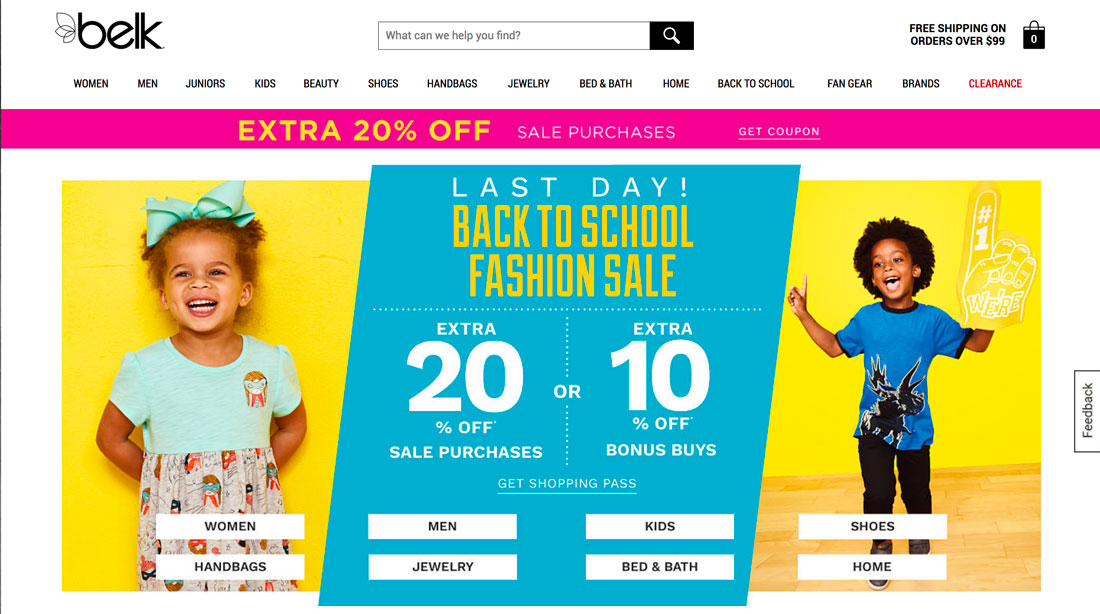




![Download Now: The Global Marketing Playbook [Free Guide]](https://no-cache.hubspot.com/cta/default/53/1b545c7f-72fe-45bb-b651-30d5f1df6f10.png)
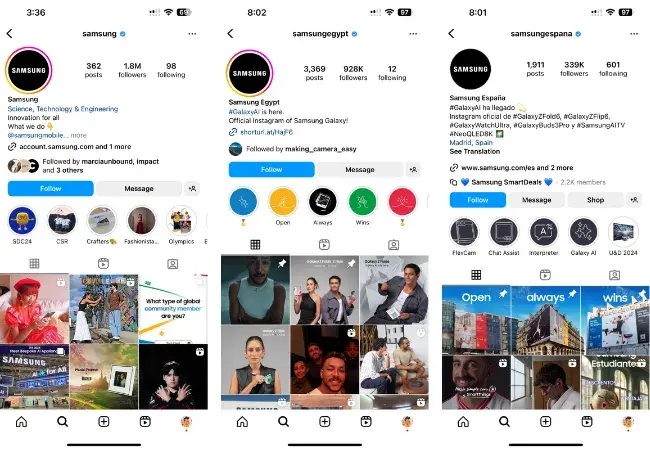
![→ Download Now: Market Research Templates [Free Kit]](https://no-cache.hubspot.com/cta/default/53/6ba52ce7-bb69-4b63-965b-4ea21ba905da.png)



















![→ Access Now: 16 Timeline & Flowchart Templates [Free Tool]](https://no-cache.hubspot.com/cta/default/53/6aa60787-a844-4b56-ab23-2b2aa079e7fc.png)
